Sewer pump station (KNS): types, device, installation and maintenance
In situations where it is not possible to provide the necessary slope of the sewer pipe, the gravity drainage scheme does not work. In these cases, a sewage pumping station is indispensable, providing unimpeded outflow and recycling.
There are two types of units: mini-stations and fully-functional complexes for home maintenance. We will figure out which option is better to give preference to, which characteristics should be considered when choosing. In addition, we describe the step-by-step installation technology and operating rules of the sewer station.
The content of the article:
Fields of application and purpose
Sewage pumping station (SPS) is an integrated complex of hydraulic equipment, which is designed for pumping storm water, industrial and domestic wastewater, when their gravity drainage is impossible.
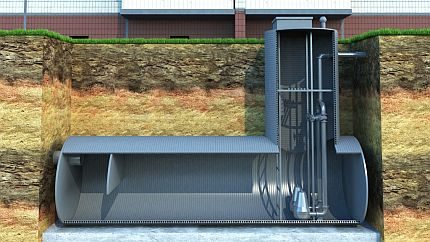
KNS is used mainly in such cases:
- The geodetic level of the tanks and pipelines from which the drains are discharged is located below the sewer or cesspool.
- Lack of physical ability to organize a straight-line gravity drainage or small sewer pipe slopethreatening regular clogging of it.
- The distant location of the cesspool or central collector from the source of wastewater.
The pumping stations are equipped with cottage villages, country houses, as well as industrial facilities located far beyond the city and remote from the centralized sewer network.
Classification of sewer stations
The sizes of domestic sewage pumping stations can be very different.They can fit directly behind the toilet and immediately pump wastewater from it in the required direction, or they can look like horizontal tanks buried in the ground with a volume of tens of cubic meters.
But not only the size of the SSC differ. Below are the classifications of pumping stations for sewage by various parameters.
By type of installation:
- Vertical.
- Horizontal
- With self-priming pumps.
The last type of SPS involves the forced injection of wastewater into the station building, and their removal from it after treatment.
By type of location relative to the ground:
- Buried.
- Terrestrial.
- Partially buried.
SPS tank with sensors, sewage pumps and shutoff valves may be in the ground, and the automatic control system can be on the surface.
According to the equipment control scheme:
- Hand operated. Switching equipment modules on and off occurs as necessary by service personnel, who independently check the filling rate of the sewer tank.
- Remote. A reservoir monitoring system is used, the data of which are output to a remote control panel.
- Automatic. Control is carried out automatically using sensors and relays located directly in or near the pump station body.
Manual control stations are the cheapest, but require personal involvement. They are used mainly in country cottages and cottages with a small amount of water consumption.
By the nature of sewage:
- For domestic wastewater. Designed for use in standard conditions.
- For industrial purposes. They are made of materials with increased resistance to chemically aggressive environments and thermal effects.
- For storm networks. Equipped with additional cleaning systems.
- For sedimentary wastewater. Used most often in industrial wastewater treatment plants. Equipped with additional devices for processing sedimentary deposits.
When choosing a KNS model, it is better to focus not on classification, but on the recommendations of specialists who will select the optimal system for a particular house.
Rules for choosing equipment
Further, the criteria will be analyzed, taking into account which it is necessary to choose sewage pumping equipment for private use. Analysis of industrial plants is not included in the scope of this review.
The goal when buying a pumping station is to purchase equipment that is optimal in terms of power and other characteristics. There is no point in overpaying for systems that will operate at 10-20% of design capacity.
When choosing the SPS take into account the following parameters:
- Maximum flow of recyclable waste.
- Shipping distance.
- The difference in geodetic levels between the inlet pipe and the outlet of the pressure hose.
- The degree of contamination, fractional composition and structure of domestic wastewater. There are SPS that grind large fractions of inclusions, preventing blockages in pumping equipment.
- Level of wastewater treatment required.
- Dimensions of equipment.
There is no unified formula for calculating the productivity of pumping equipment, therefore, the calculation algorithm and the necessary indicators should be indicated in the instructions for the acquired pump station.
A typical project for calculating the productivity of pumping equipment includes the following steps:
- Determination of daily water consumption and volume of effluents.
- Building an indicative schedule of sewage sewage during the day.
- Calculation of the minimum and maximum sewer flow.
- Determination of the required performance of SPS, taking into account the pollution of effluents
After determining the above parameters, you can begin to engage in the selection of suitable equipment.
The brand name of the manufacturer, the maintainability of the product, and the possibility of after-sales service affect the price of KNS. It is especially not recommended to purchase cheap pumps if they are supposed to be used daily, and at the same time there are no reserve tanks or an additional pump for discharging waste water.
The device and principle of operation of the SPS
The device of modern SPS should be considered in two main options:
- sololift;
- sewer station for home or a cottage.
There are no fundamental differences between these devices. But sololifts are the only ready-made equipment that can be bought on the Internet and independently connected, and sewer stations are formed from separately sold parts for a specific external sewage project.
Compact mini stations
Portable pumping stations of the Sololift type have a compact appearance and are installed near plumbing equipment. It is installed either in the basement of the house or in the bathroom itself.
The main structural units of sololift are:
- sealed housing with nozzles and holes;
- engine;
- impeller with a cutting edge;
- automation.
When water enters the device, the automation is activated and the engine turns on. As a result, fluid is pumped from the internal reservoir to the pressure pipe. The impeller further grinds large fragments to effectively remove suspended particles and prevent clogging.

Sololift case may have 2-5 holes for connecting plumbing fixtures. At the top of the device is an air valve that provides air intake from outside when the pump is running. This prevents stalling. water trap in siphons home equipment.
Performance portable mini cns standard and theoretically calculated based on the number of supply pipes. After purchasing the equipment, it is enough to connect the pressure hose and sewer pipes to the body of the solophyte, and then plug it into the outlet.
KNS for a country house
The pumping station for a frequent house usually has an impressive size and digs into the ground. You will not be able to find ready-made structural solutions of this type on the Internet, and to determine the estimated cost of equipment, you need to call up store managers or leave a request on sellers' websites.
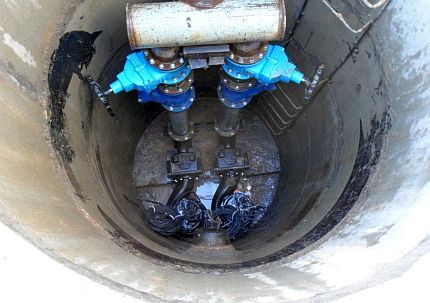
Fiberglass and plastic containers are more durable. They do not require any care and will last at least 50 years. The station is a sealed tank with pumps inside.
The main elements of the KNS for the home are:
- Storage tank made of plastic, fiberglass, concrete or metal with a volume of several cubic meters.
- Fecal pump. Two pumps are installed in daily operating stations: a working one and a standby one, the task of which is to raise the wastewater to a certain level for their further progress through pipes by gravity.
- Gravity water system (inlet and pressure outlet), combining the internal sewerage, pumping station and subsequent collector. The system is equipped with valves and check valvewhich allow fluid to flow in only one direction.
- Automation with float switches. It is recommended to install 3-4 floats at the same time, each of which is able to turn on the pump. They are inexpensive, so you should not save on them.
Large home SPS have a working principle slightly different from sololift. A drain tank is buried in the ground and connected to a drain sewer pipe. When the level of sewage reaches the level set by the regulation, the float mechanism closes the network and turns on the pump.
Water pumping stops only when the float reaches a level much lower than the one that led to its inclusion. Such a scheme allows less frequent switching on of pumping equipment, reducing operational loads.
Additional floats are designed to turn on the backup pump. The water level for their start is set slightly higher than for the main pump.
This allows you to play it safe and turn on the backup equipment only in case of a malfunction of the main one.
Additionally, SPS can be equipped with such devices:
- flowmeter;
- trellised containers for filtering large debris;
- control and adjustment cabinets;
- ladder for descent into the container;
- swirl flow regulator;
- sorption filters.
The selection of a set of equipment should be carried out only under the supervision of specialists. This will allow you to choose components with the most appropriate characteristics and productivity.
KNS installation instruction
Installation of domestic water supply stations is carried out exclusively by qualified workers, due to the high requirements for accuracy of work and compliance with the sequence of actions.
Failure to do so may result in damage to the tank or its associated pipes. Next, step-by-step instructions for installing the SSC will be discussed for people who want to do this on their own.
Step # 1. A selection of the installation site of the pump station is being carried out. SNiPs require to dig a tank at least 20 m from the walls of a residential building. If geodetic levels allow, it is advisable to choose a site higher so that a lot of groundwater does not accumulate under the station.

Step number 2. A pit is dug up taking into account the diameter of the tank and the place for convenient installation work. If the soil goes to the excavator, then you need to stop work 20-30 cm above the design level. Further, it is necessary to manually extract the earth with a shovel in order to maintain the integrity of the soil.
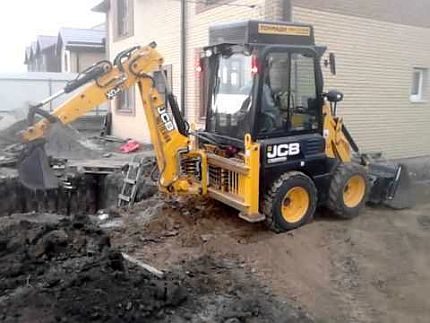
Step number 3. The choice of the type of foundation for the installation of SPS and its installation. To do this, after digging a hole, the soil water content is estimated. If the soil is dry, then you can make the formwork and fill it with a 30-cm layer of concrete.
And if groundwater constantly seeps into the pit, then only a ready-made reinforced concrete slab with a thickness of at least 30 cm is suitable for the foundation.
The concrete base must be strictly horizontal, therefore, when laying the finished concrete slab, you need to take care of this in advance.
KNS capacities have a skirt or legs for attaching to the foundation. Anchor bolts are used as fasteners, although when pouring concrete on the ground, metal rods can also be embedded in the mixture, onto which the container fastening can then be mounted.
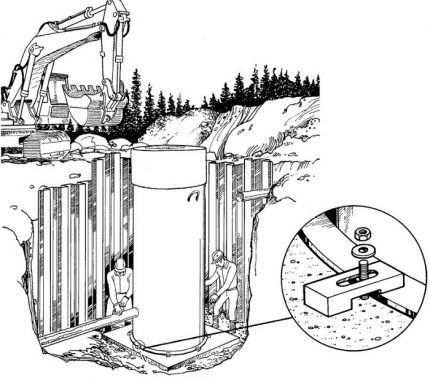
Step number 4. The KNS capacity is installed on the foundation, its fastening and connection to the drain pipe of the domestic sewage system. With a vertical type of station and a large amount of groundwater, the container must be loaded with concrete. To do this, concrete is poured around the tank 20 cm above the level of the first stiffening station.
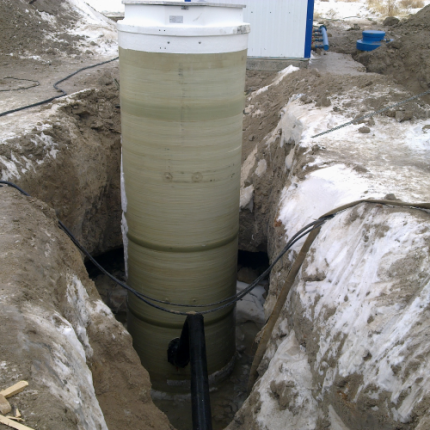
Step number 5. The station is backfilled with fine soil, the maximum grain size of which is 32 mm. Each layer of the earth should be no more than 50 cm. After filling the next belt, it is poured with water for shrinkage and rammed.
On this, the external installation of the pump station ends. After fixing in the soil inside the station, pumps, sensors, check valves and other auxiliary equipment are installed.
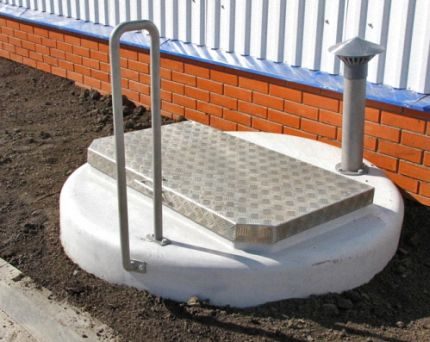
It will not be superfluous to conduct an emergency warning system in the house about the critical level of domestic wastewater in the tank, which will warn about malfunctions in the station.
Typical installation errors
Due to improper installation of the tank, its inclination or improper backfill, damage to the walls of the tank, pipes or suitable pipes can occur. Such problems threaten manual excavation of the tank and considerable financial costs.
Therefore, you should analyze typical errors in advance so as not to repeat them when installing your own SPS.
- Incorrect backfill. Possible errors: filling with frozen soil or large stones, lack of layering. The result may be land subsidence with damage or shear of the internal pipeline.
- Different type of backfill from different sides. If sand was poured into a pit on one side and earth on the other, then over time the tank may skew with damage to the outer pipes or the tank itself.
- Incorrect groundwater assessment, due to which there is a strong subsidence of the entire pumping station with rupture of pipes and damage to the tank.
- Using wedges to align foundation slabs. The consequence may be a gradual displacement of the tank to the side with a rupture of pipes.
Only people with a geodetic education and experience in installing such structures can evaluate the correctness of the installation of SPS. Therefore, trusting the installation of this expensive equipment to non-specialized organizations is not worth it.
Maintenance of external SPS
Sewage pumping station is not equipment that can be installed and simply content with its work. The tank and pumps require regular inspection.
It is strictly forbidden to go down into the tank or carry out cleaning work on your own!
Inhalation of sewer gases can cause a sharp loss of consciousness and death if a person is not pulled into clean air for several minutes.
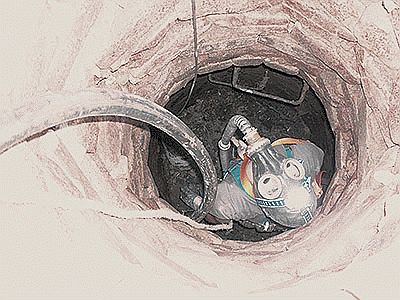
When buying a pump station, it is advisable to immediately sign an agreement on its maintenance.
To access the tank and check the equipment, the stations have a hatch, and deep tanks also have a ladder for descent.
Monthly or quarterly service should:
- check automation;
- diagnose the operation of the main and backup pumps, check the oil levels in them;
- remove jammed debris from the filters;
- remove sludge from the bottom.
In case of urgent emergencies, an independent inspection of the tank is possible, but it must be carried out in the presence of assistants, with rope insurance and a respirator.
Conclusions and useful video on the topic
For a complete understanding of the installation of sewer stations and the hydrodynamic processes occurring in them, it is recommended that you familiarize yourself with the videos below.
The principle of the KNS:
The principle of operation of an intra-house mini-station for pumping sewage:
Installation of a medium-sized household sewer station:
Pumping equipment of sewage pumping stations is designed for trouble-free operation for 8-10 years, and the system of tanks and pipelines can last up to half a century.
Therefore, once you buy and install a pumping station when building a house, you can ensure the comfortable functioning of the sewer system for decades.
Have experience operating a sewage pumping station? Please share information with our readers, tell us about the features of the installation and use of SPS. You can leave comments in the form below.

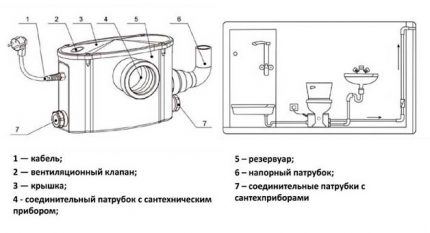
 Domestic sewage pumping stations: types, design, installation examples
Domestic sewage pumping stations: types, design, installation examples 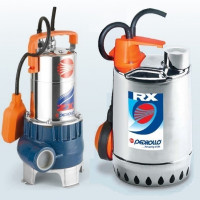 Sewage pumps: types, how to choose the right + operating features
Sewage pumps: types, how to choose the right + operating features 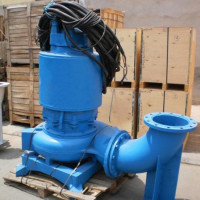 Types of fecal pumps: how to choose the right equipment for your needs
Types of fecal pumps: how to choose the right equipment for your needs 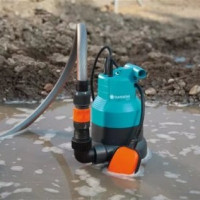 How to choose a fecal pump for a summer residence: an overview of the types and rules for selecting equipment
How to choose a fecal pump for a summer residence: an overview of the types and rules for selecting equipment 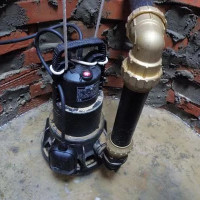 Cesspool pump: selection tips + review of the best brands
Cesspool pump: selection tips + review of the best brands 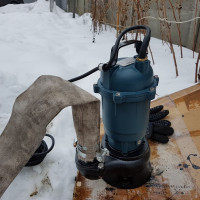 Fecal pump with grinder: selection tips and an overview of the best brands
Fecal pump with grinder: selection tips and an overview of the best brands  How much does it cost to connect gas to a private house: the price of organizing gas supply
How much does it cost to connect gas to a private house: the price of organizing gas supply  The best washing machines with dryer: model rating and customer tips
The best washing machines with dryer: model rating and customer tips  What is the color temperature of light and the nuances of choosing the temperature of the lamps to suit your needs
What is the color temperature of light and the nuances of choosing the temperature of the lamps to suit your needs  Replacement of a geyser in an apartment: replacement paperwork + basic norms and requirements
Replacement of a geyser in an apartment: replacement paperwork + basic norms and requirements
I tried to install it myself. I wanted to save. Nothing like this. There was an urgent need for qualified plumbers. I had to again contact the company where I made the purchase. The guys did not show any emotions. They explained that I was not the first to initially try to carry out installation on my own due to the high payment for installation services.